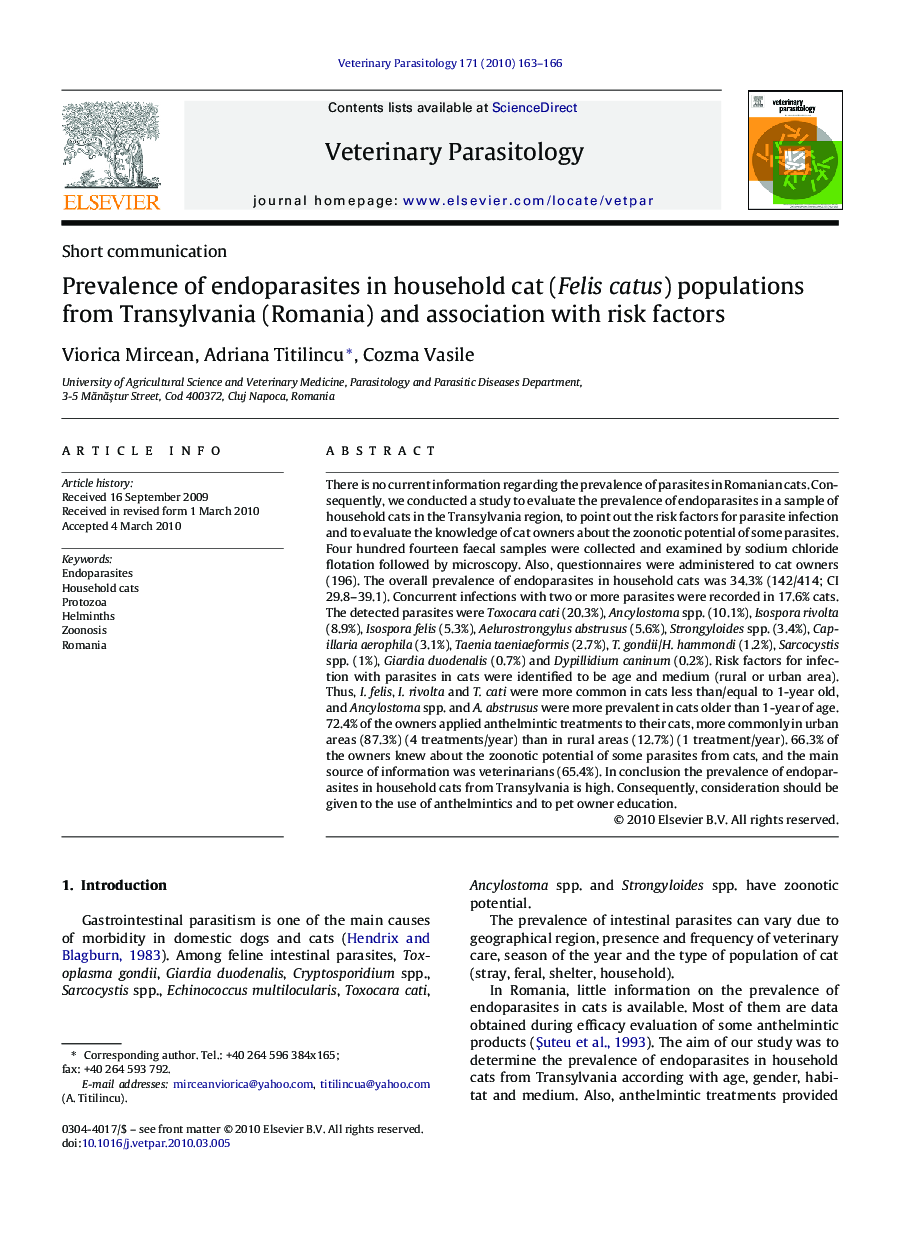| کد مقاله | کد نشریه | سال انتشار | مقاله انگلیسی | نسخه تمام متن |
|---|---|---|---|---|
| 2470661 | 1555739 | 2010 | 4 صفحه PDF | دانلود رایگان |

There is no current information regarding the prevalence of parasites in Romanian cats. Consequently, we conducted a study to evaluate the prevalence of endoparasites in a sample of household cats in the Transylvania region, to point out the risk factors for parasite infection and to evaluate the knowledge of cat owners about the zoonotic potential of some parasites. Four hundred fourteen faecal samples were collected and examined by sodium chloride flotation followed by microscopy. Also, questionnaires were administered to cat owners (196). The overall prevalence of endoparasites in household cats was 34.3% (142/414; CI 29.8–39.1). Concurrent infections with two or more parasites were recorded in 17.6% cats. The detected parasites were Toxocara cati (20.3%), Ancylostoma spp. (10.1%), Isospora rivolta (8.9%), Isospora felis (5.3%), Aelurostrongylus abstrusus (5.6%), Strongyloides spp. (3.4%), Capillaria aerophila (3.1%), Taenia taeniaeformis (2.7%), T. gondii/H. hammondi (1.2%), Sarcocystis spp. (1%), Giardia duodenalis (0.7%) and Dypillidium caninum (0.2%). Risk factors for infection with parasites in cats were identified to be age and medium (rural or urban area). Thus, I. felis, I. rivolta and T. cati were more common in cats less than/equal to 1-year old, and Ancylostoma spp. and A. abstrusus were more prevalent in cats older than 1-year of age. 72.4% of the owners applied anthelmintic treatments to their cats, more commonly in urban areas (87.3%) (4 treatments/year) than in rural areas (12.7%) (1 treatment/year). 66.3% of the owners knew about the zoonotic potential of some parasites from cats, and the main source of information was veterinarians (65.4%). In conclusion the prevalence of endoparasites in household cats from Transylvania is high. Consequently, consideration should be given to the use of anthelmintics and to pet owner education.
Journal: Veterinary Parasitology - Volume 171, Issues 1–2, 15 July 2010, Pages 163–166